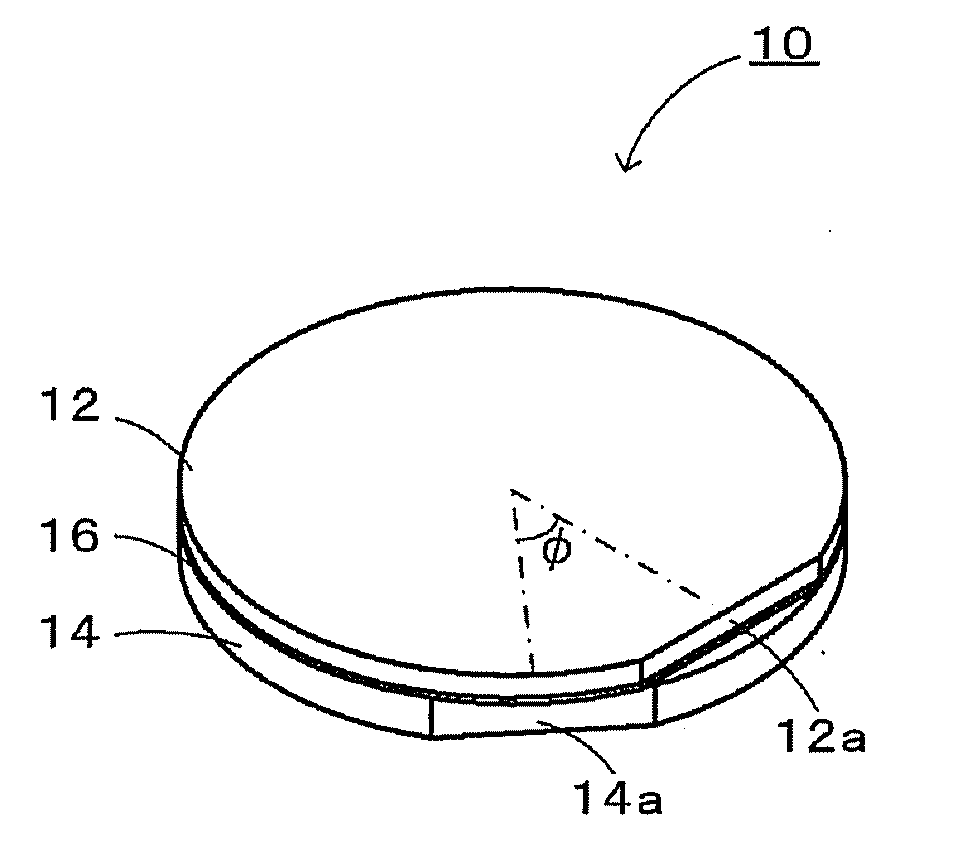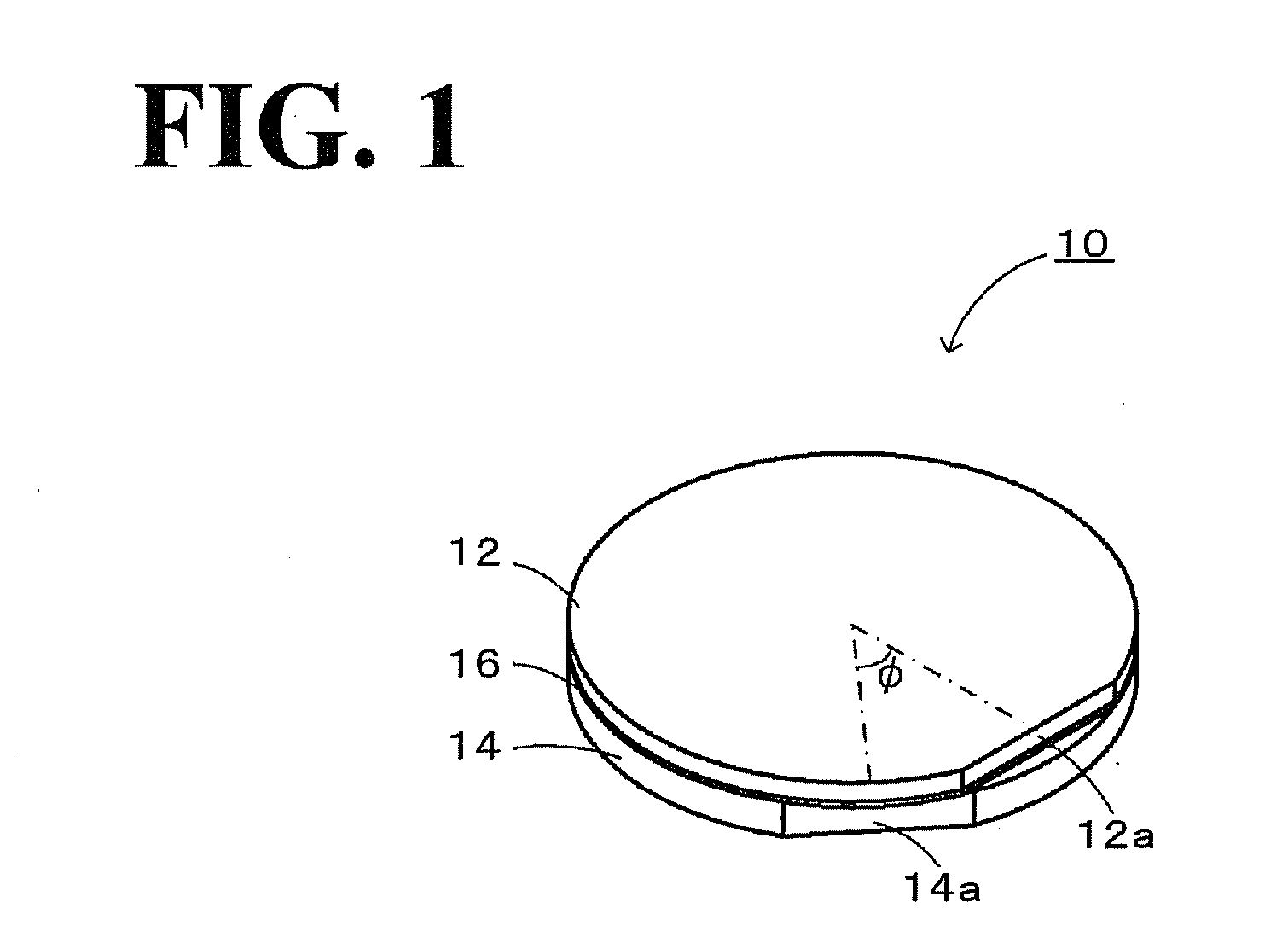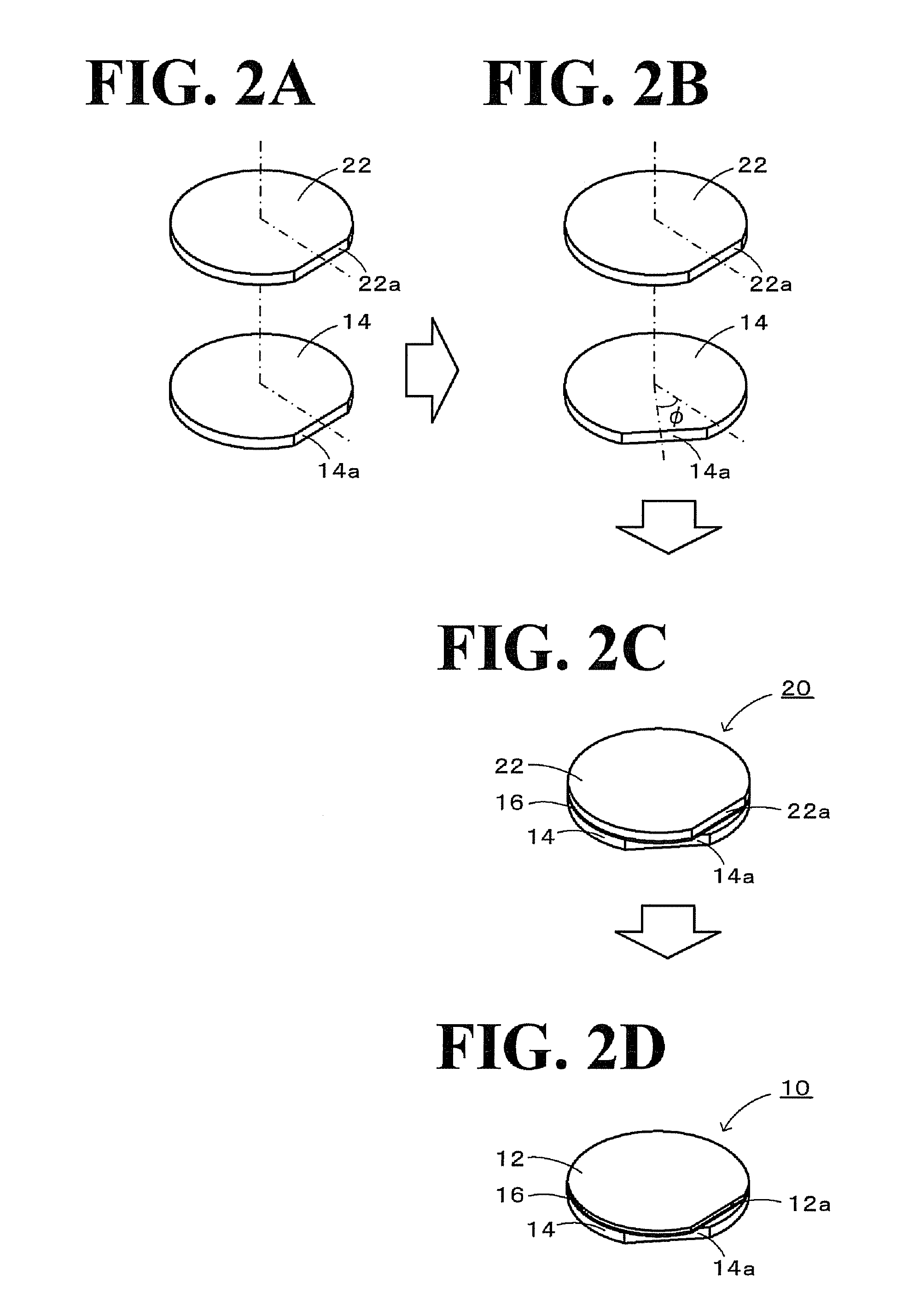Composite substrate, elastic wave device using the same, and method for manufacturing composite substrate
- Summary
- Abstract
- Description
- Claims
- Application Information
AI Technical Summary
Benefits of technology
Problems solved by technology
Method used
Image
Examples
example 1
[0030]FIG. 1 is a perspective view of a composite substrate 10. This composite substrate 10 is used for a surface acoustic wave device and includes a piezoelectric substrate 12 composed of lithium tantalate (LT) capable of transmitting an elastic wave, a support substrate 14 composed of silicon and bonded to this piezoelectric substrate 12, and an adhesive layer 16 which bonds the two substrates 12 and 14. The piezoelectric substrate 12 has a thermal expansion coefficient of 16.1 ppm / K. This piezoelectric substrate 12 is a 42° Y-cut X-transmission LT substrate (42Y-X LT) that is rotated 42° from the Y axis to the Z axis about the X axis which is the transmission direction of a surface acoustic wave and has an orientation flat (hereinafter abbreviated as “orifla”) 12a. The direction of the orifla 12a of the piezoelectric substrate 12 indicates the transmission direction (X axis) of a surface acoustic wave. The support substrate 14 has a thermal expansion coefficient of 2.55 ppm / K and...
example 2
[0037]A composite substrate 10 of Example 2 was similar to that of Example 1 except that an X-cut 112° Y-transmission LT substrate (X-112Y LT) was used as the piezoelectric substrate 12. In Example 2, FIG. 6 shows the way of change in in-plane maximum thermal strain amount SH which was obtained when the above simulation (see Equation 1) was performed in which the thickness of the support substrate 14 was set to 350 μm and the thickness of the piezoelectric substrate 12 was set to 30 μm. As apparent from FIG. 6, the in-plane maximum thermal strain amount SH had the maximum value and the minimum value, and the minimum value of the in-plane maximum thermal strain amount SH was reduced by 21% to 22% as compared to the maximum value thereof.
example 3
[0038]A composite substrate 10 of Example 3 was similar to that of Example 1 except that a 128° Y-cut X-transmission lithium niobate (LN) substrate (128Y-X LN) was used as the piezoelectric substrate 12. In Example 3, FIG. 7 shows the way of change in in-plane maximum thermal strain amount SH which was obtained when the above simulation (see Equation 1) was performed in which the thickness of the support substrate 14 was set to 100 μm and the thickness of the piezoelectric substrate 12 was set to 10 μm, 20 μm, and 30 μm. As apparent from FIG. 7, the in-plane maximum thermal strain amount SH had the maximum value and the minimum value, and the minimum value of the in-plane maximum thermal strain amount SH was reduced by 10% to 11% as compered to the maximum value thereof. In addition, when the simulation was performed in a manner similar to that described above in which the thickness of the support substrate 14 was set to 200 μm and 300 μm, a graph similar to that of FIG. 7 was obtai...
PUM
| Property | Measurement | Unit |
|---|---|---|
| Fraction | aaaaa | aaaaa |
| Angle | aaaaa | aaaaa |
| Angle | aaaaa | aaaaa |
Abstract
Description
Claims
Application Information
 Login to View More
Login to View More - R&D
- Intellectual Property
- Life Sciences
- Materials
- Tech Scout
- Unparalleled Data Quality
- Higher Quality Content
- 60% Fewer Hallucinations
Browse by: Latest US Patents, China's latest patents, Technical Efficacy Thesaurus, Application Domain, Technology Topic, Popular Technical Reports.
© 2025 PatSnap. All rights reserved.Legal|Privacy policy|Modern Slavery Act Transparency Statement|Sitemap|About US| Contact US: help@patsnap.com



